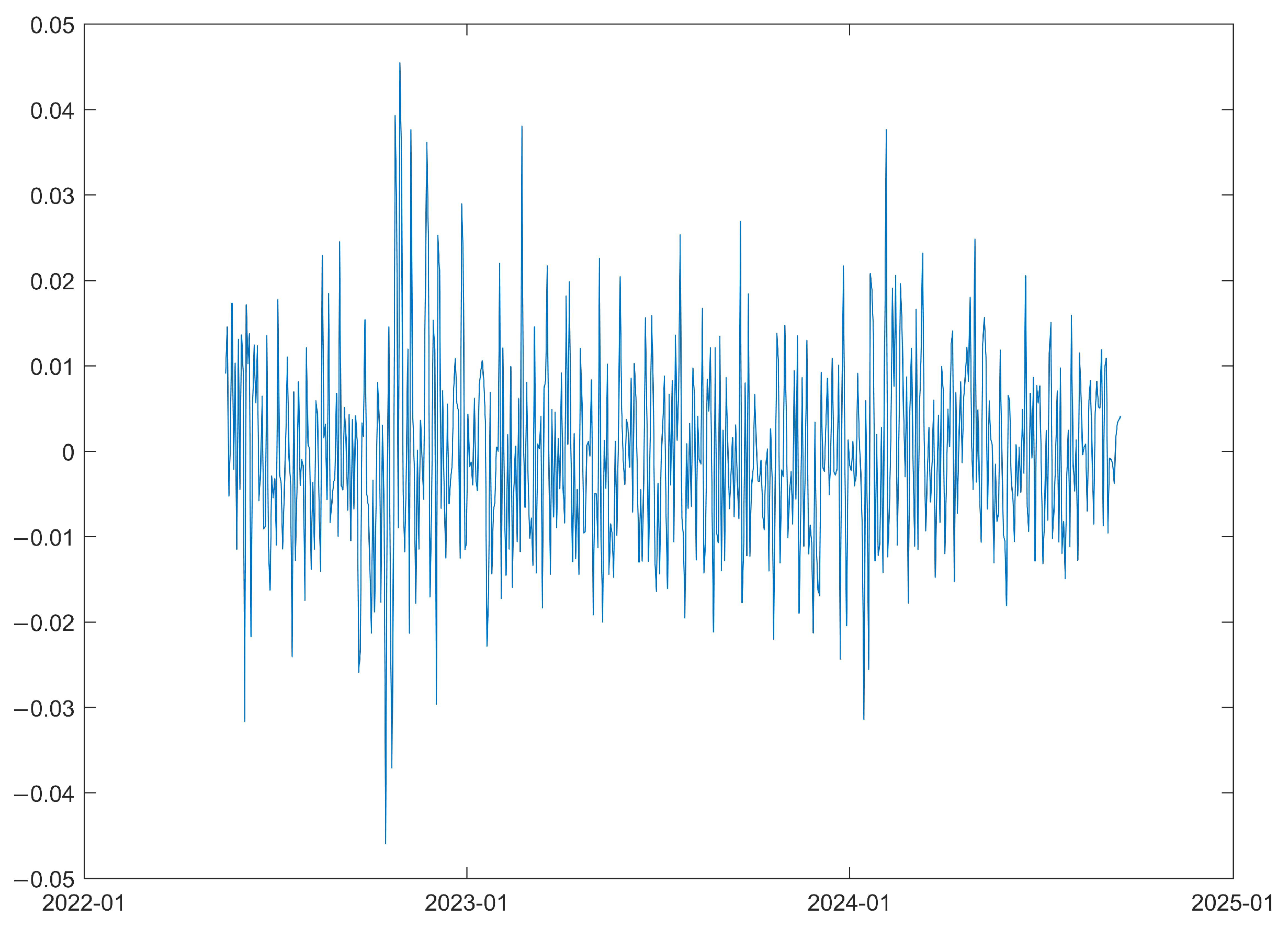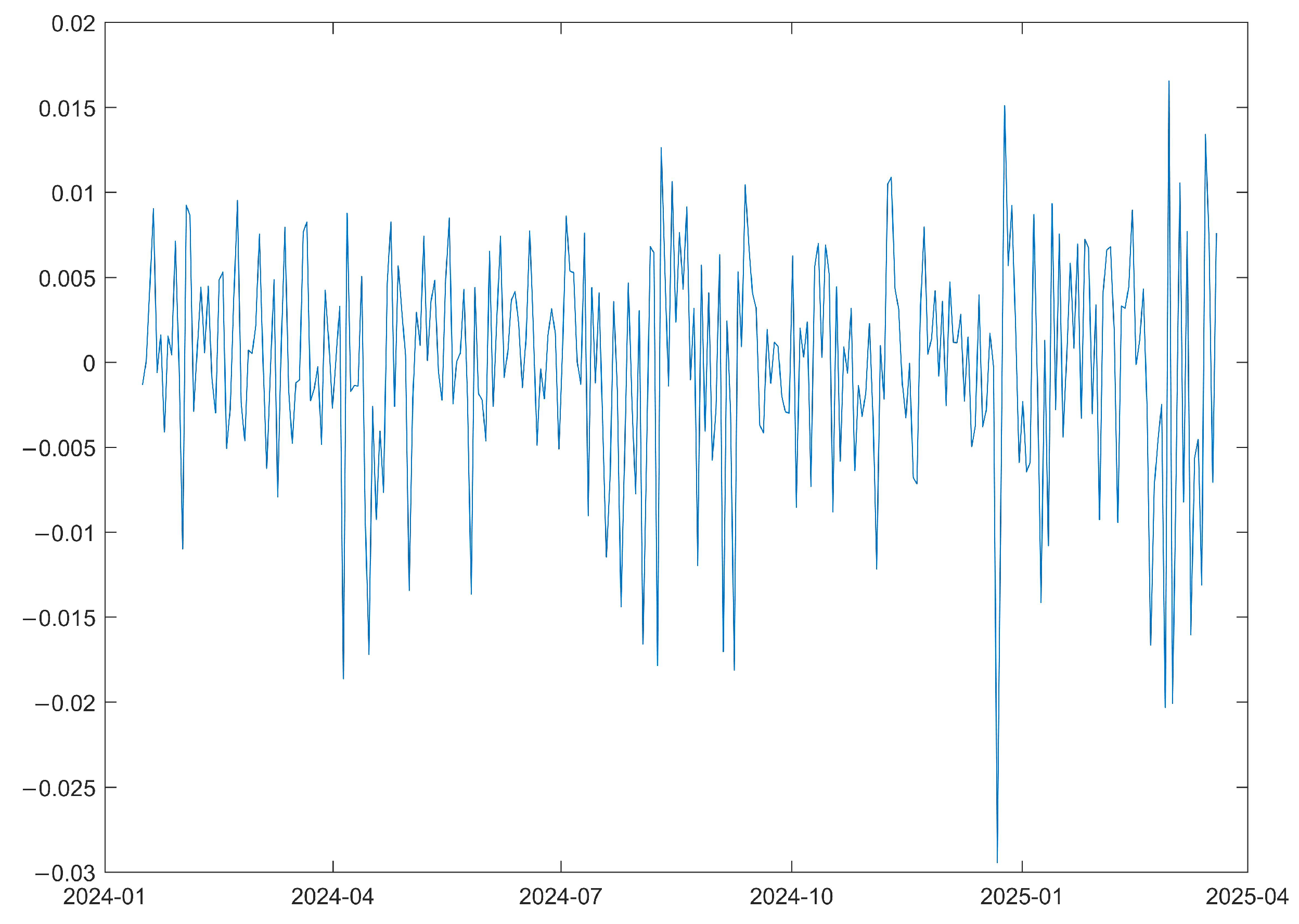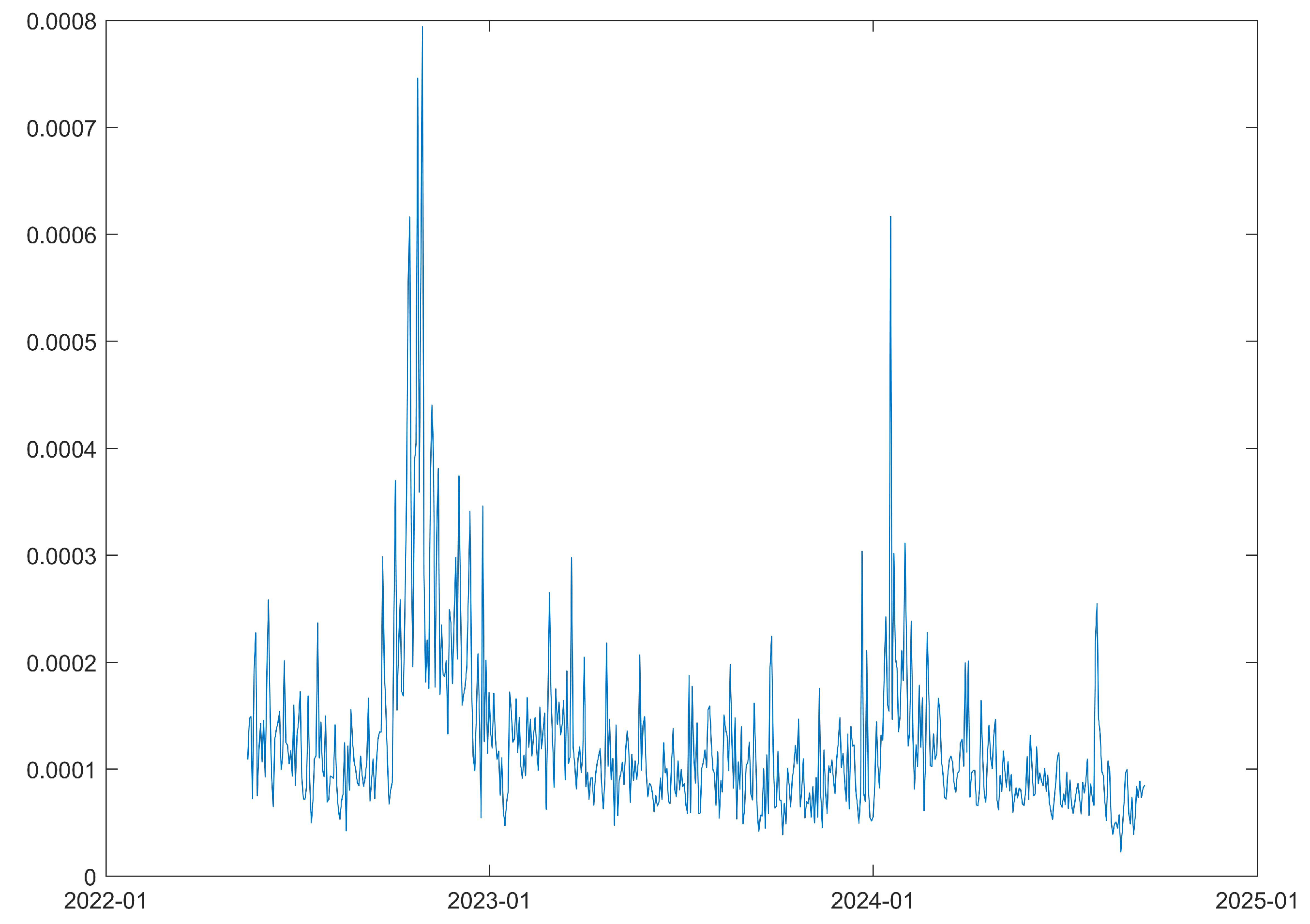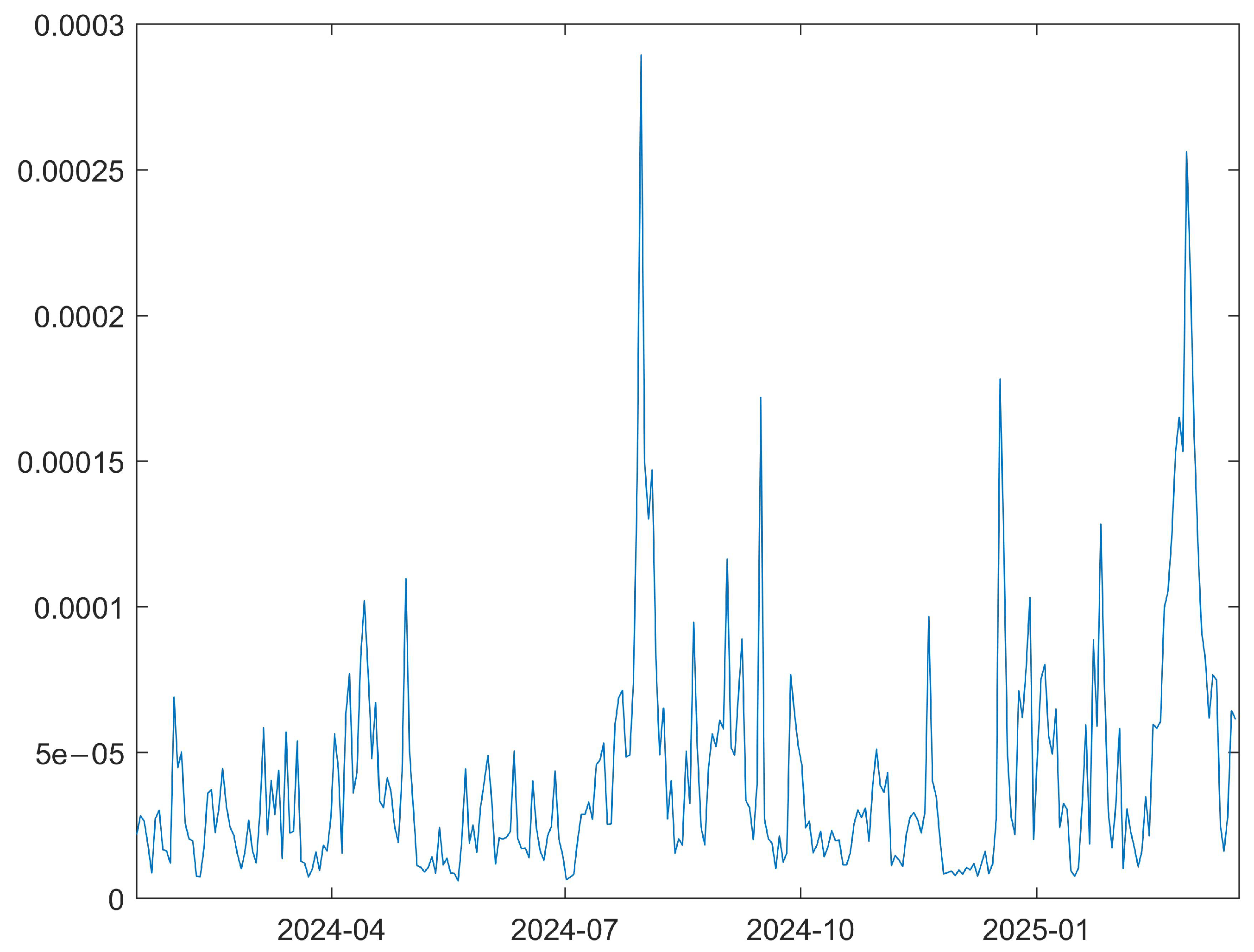Under standard arguments, the strong consistency is obtained by showing the following intermediate results:
Lemma A3 (Existence of log-moments). Let be a stationary RG-TVL() process with the parameter vector . If and , then
(i) ;
(ii) ;
(iii) Furthermore, if Assumption 1 holds, we have .
The proof of intermediate result(i) then follows from Lemmas A1 and A5.
Proof. First, we can prove that for any
, if
a.s., then
. Note that
If
a.s., by stationarity we have
for all
t, thus, we have a.s.
Since
is a nontrivial random variable, we have
, thus, by Assumption 1, we have
.
Second, if
a.s., which shows
and by Assumption 2, we have
.
Finally, since , the lemma has been proved. □
Step(ii) is proved in Lemma A6.
Appendix A.1.1. Proof of Theorem 2
By Taylor expansion, due to the existance of first and second derivatives of
, we have
where
satisfies
, almost surely. The thought of proof is similar to the proof of Theorem 7.1 in Straumann andd Mikosch [
42]. The asymptotic normality can be obtained by proving the following intermediate results:
(i) , as ;
(ii) converges a.s. to 0 for any sequence converges a.s. to and is invertible;
(iii) converges a.s. to 0;
(iv) , as .
For intermediate result(i), we need to show that
is a martingale difference sequence with respect to the filtration
. Note that
is conditionally independent of
, then we have
. In addition,
is
measurable and
. Since
, we can conclude that
. Thus,
is a stationary and ergodic zero-mean martingale difference sequence with respect to the filtration
. By the cental limit theorem for square-integrable stationary and ergodic martingale difference sequences, we have
where
exists.
Lemma A8. Suppose that the assumptions in Theroem 2 are satisfied. Then for any , there exists a compact set , and , such that
(i) ;
(ii) ;
(iii) .
Proof of Lemma A8 is identiacal to the proof of Lemma A.7 in Li et al. [
40].
Lemma A9. Suppose that the assumptions in Lemma A8 are satisfied such that exists. Set . Then, we have
(i) ;
(ii) , provided that ;
(iii) , provided that .
Proof. (i) Random element
is the stationary solution of the equation
Assumption 1 argues that
is linearly correlated with
. By Lemma A8 (ii), we have
.
For (ii) and (iii), we can calculate that
and
Since
, and
is independent of
and
, by Assumption 3. The results can be obtained by
, Lemma A7, and Cauchy–Schwarz inequality. □
The square-integrability of
has been shown by Lemma A9. Then, we consider intermediate result (ii). Letting
we have the following lemma:
Lemma A10. Suppose that the assumptions in Lemma A7 are satisfied that exists. If , restricted on the vector space with norm or , we have
(i) ;
(ii) ;
(iii) and .
A representation for the second derivative of the log-likelihood function is as follows:
Set in Lemma A10 such that exists.
Lemma A11. Suppose that the assumptions in Lemma A7 are satisfied that exists. If . If , then the following moment conditions hold:
(i) , for any ;
(ii) , for ;
(iii) , for .
By consistency, we have
, for sufficiently large
T. Then, we have inequality
where the first term converges a.s. to 0 by Lemma A11, and the second term converges a.s. to 0 by the twice continuous differentiability of
. With the above argument, we can conclude that
converges a.s. to 0 as
converges a.s. to
.
Lemma A12. Suppose that the assumptions in Lemma A10 are satisfied that exists. Restricted on the vector space with norm or , we have
(i) ;
(ii) ;
(iii) , for .
Lemma A13. With the assumptions in Theorem 2, we have is positive definite.
Remark A2. Since the spline structure has no effect on the exponential almost sure convergence, the proof of Lemmas A9–A13 is similar to Lemmas A.8–A.12 in Li et al. [40]. For (iii), similar to
, denote
. Then we only need to prove that
as
. By calculation, we have
and
By Lemma A.10, the above proportion holds; thus, intermediate result (iii) holds. In addition, we need to prove that
is a singular matrix. This property has been proved in Li et al. [
40].
For intermediate result (iv), first write
as
and rewrite
as
Thus,
where
For
, we have
Since
,
and
are bounded, by Lemma A1, we have
.
Then, we consider the variance of
. Note
as
and
as
, where
is bounded with Lemma A9 (i) and assumption of
.
By Härdle [
43], we have
thus,
along with
therefore, with
,
Define
. Based on central limit theorem, we have
Thus, by Slutsky’s theorem, the proof of Theorem 2 completes. □












